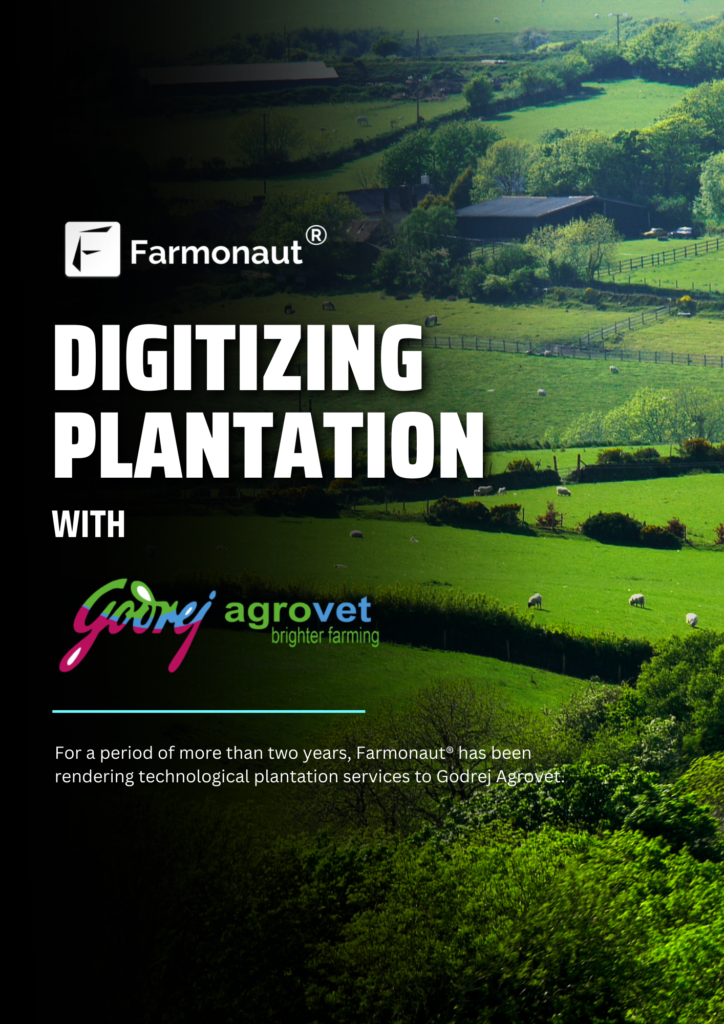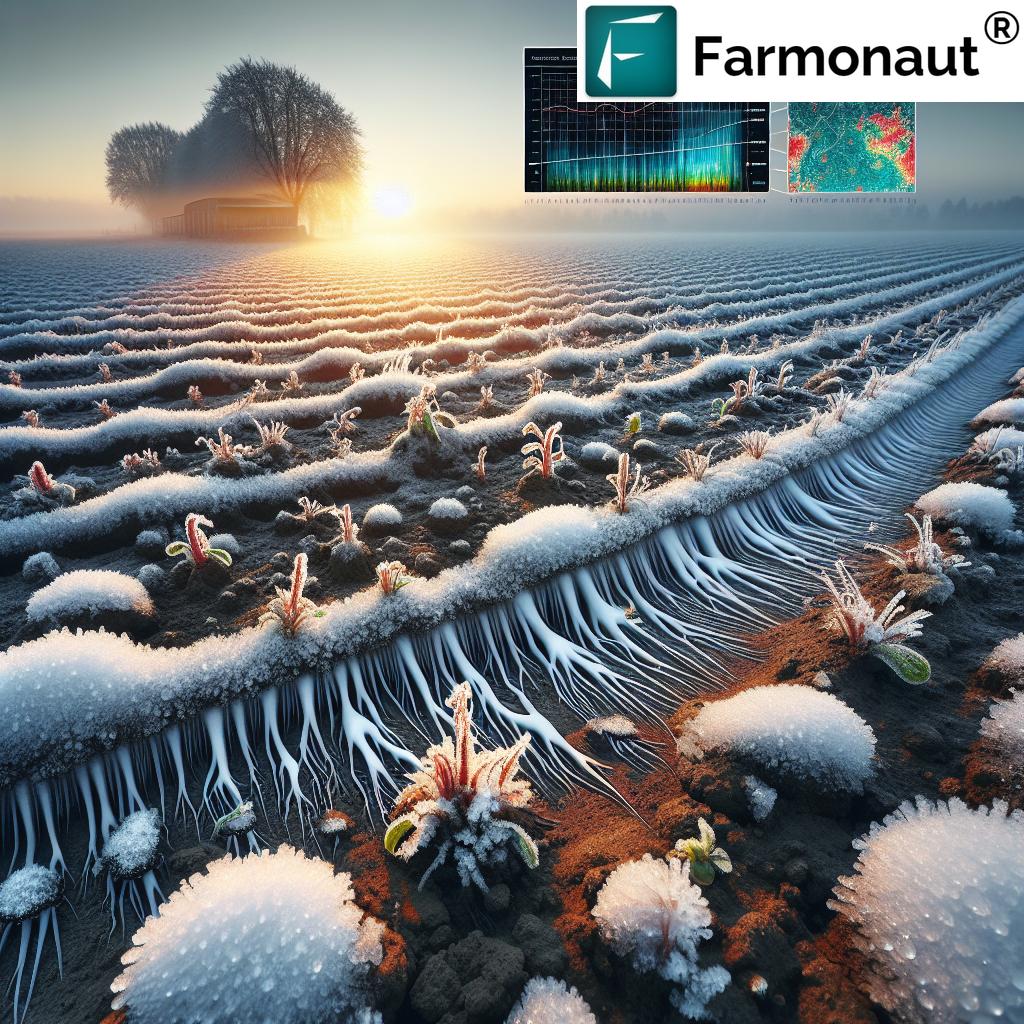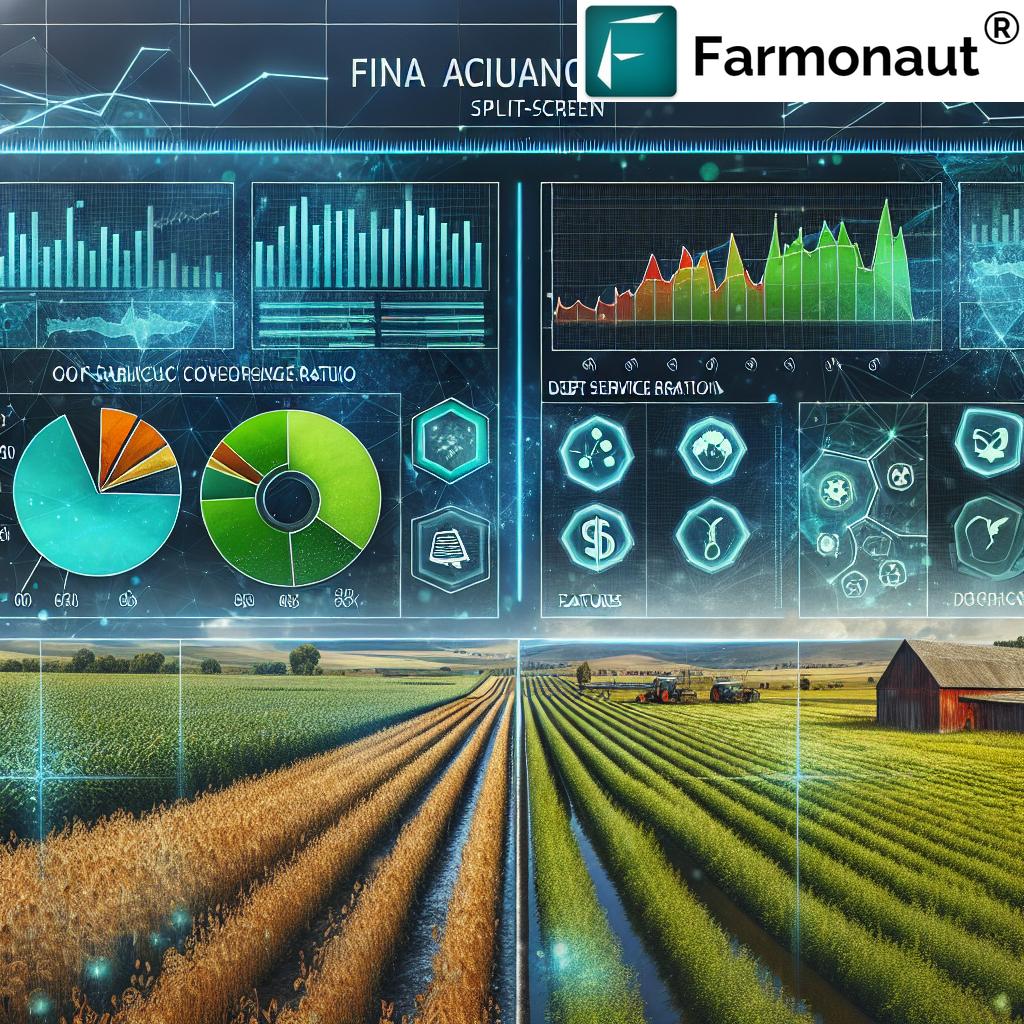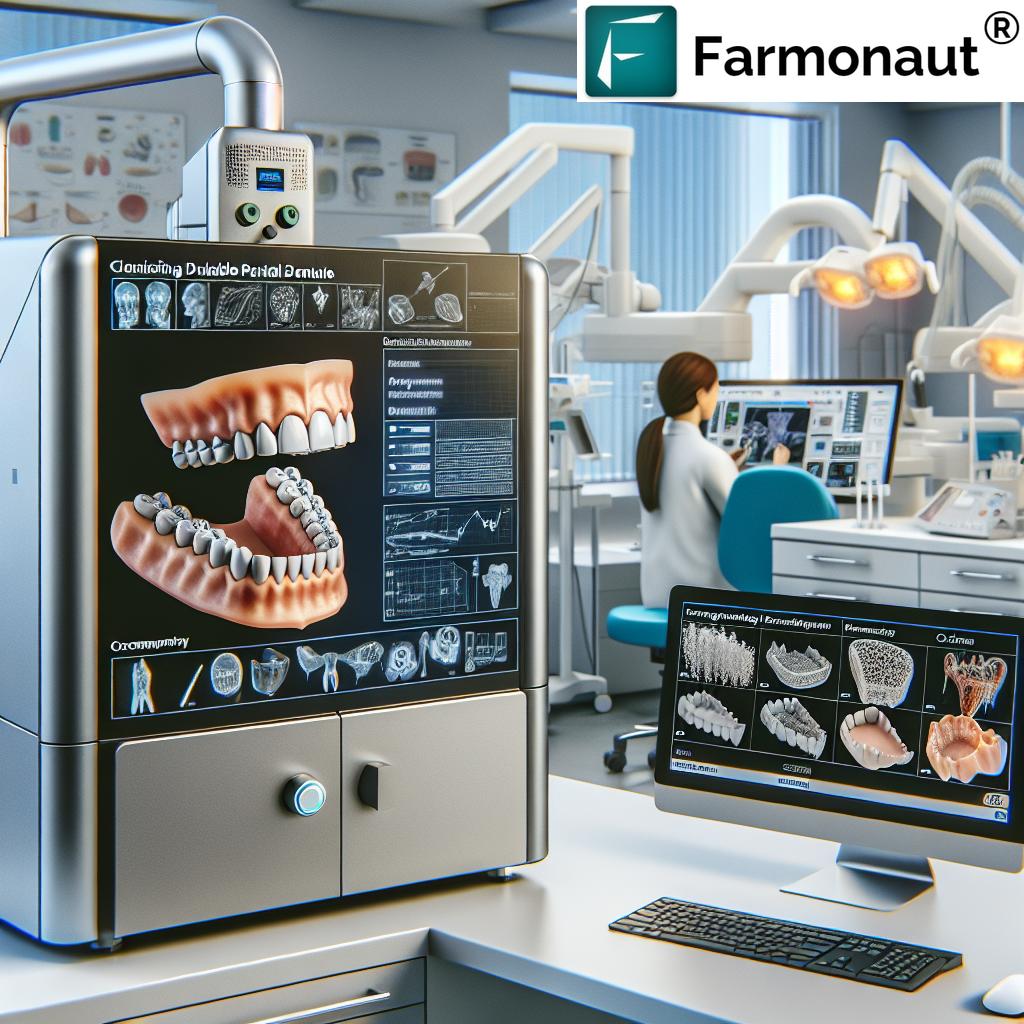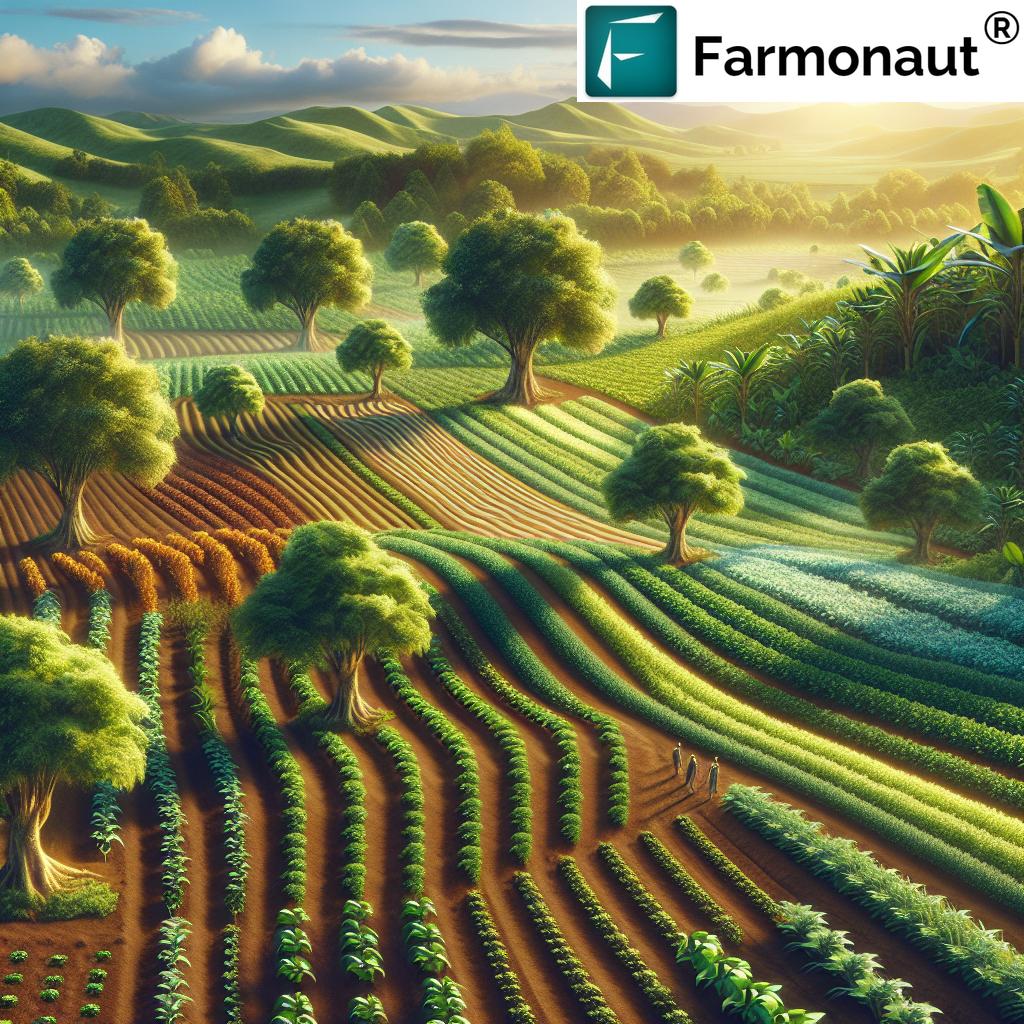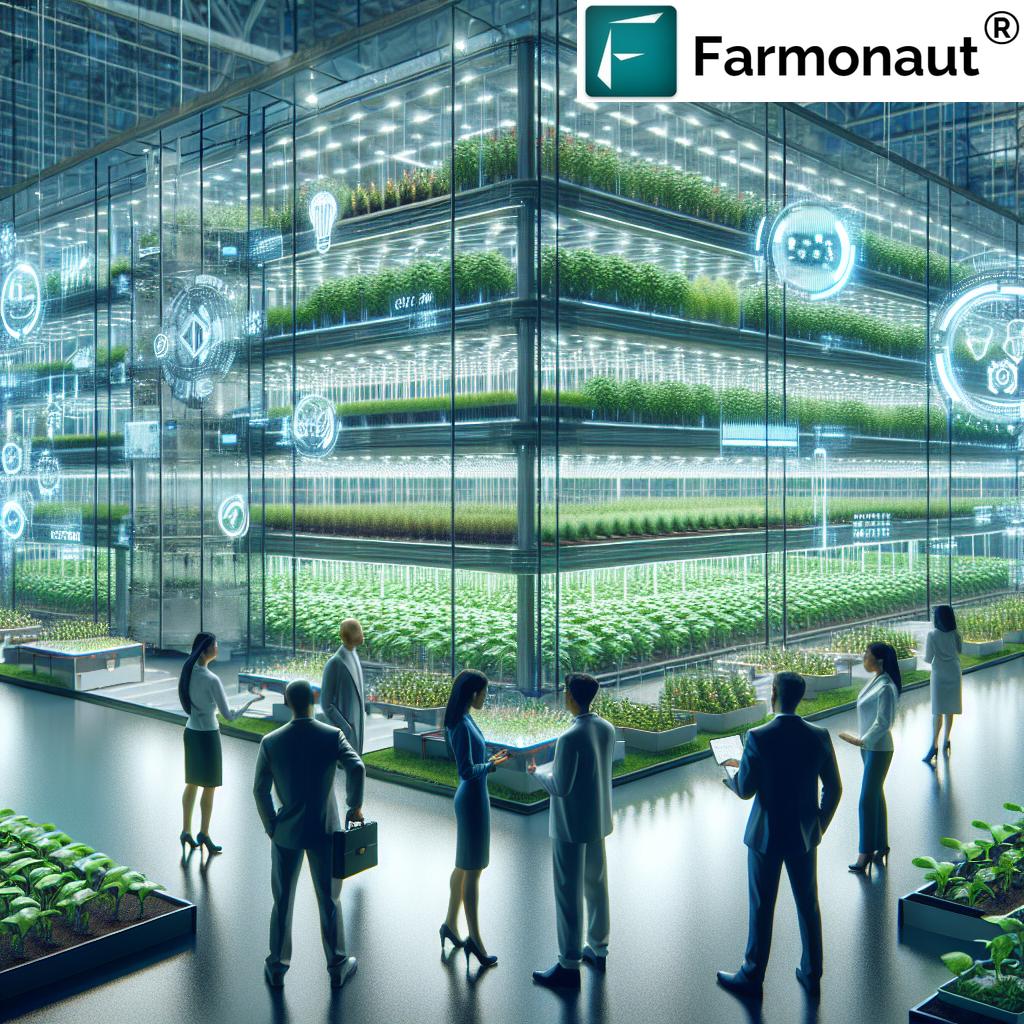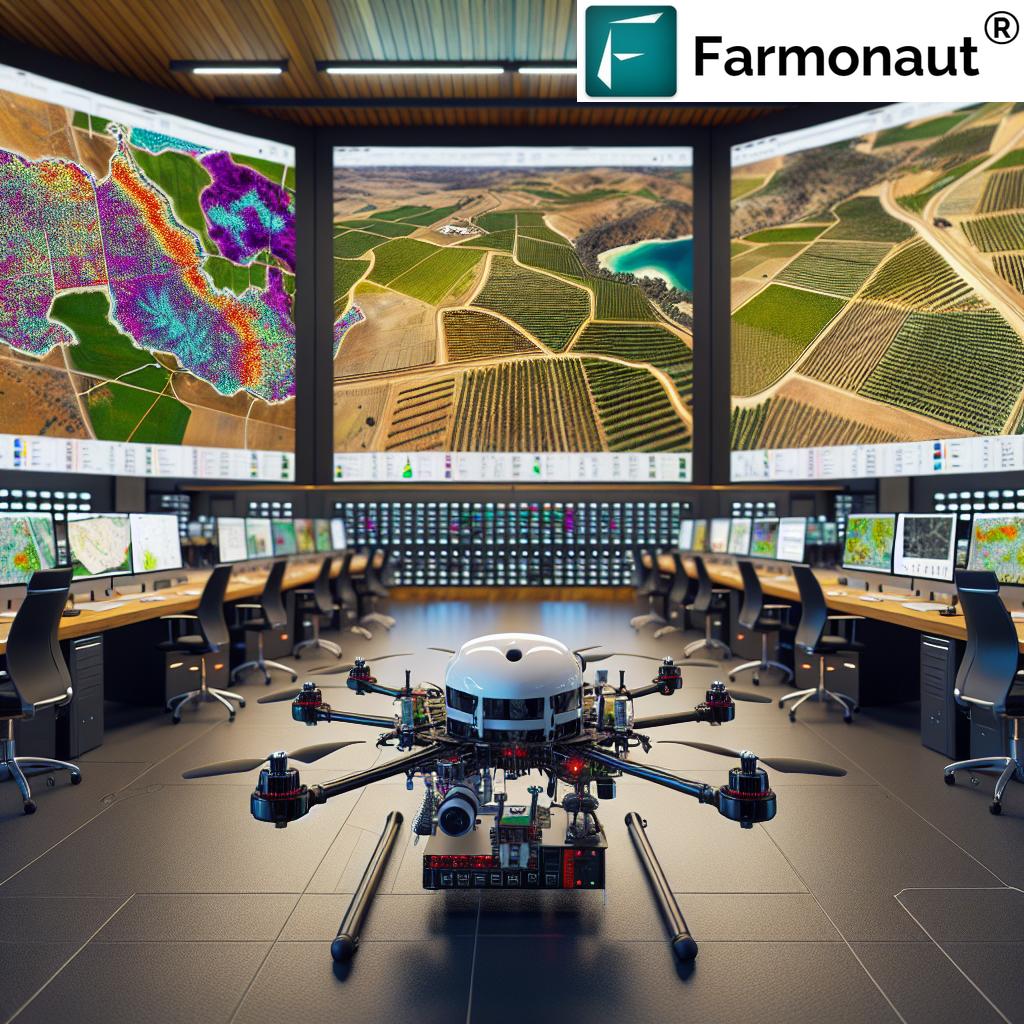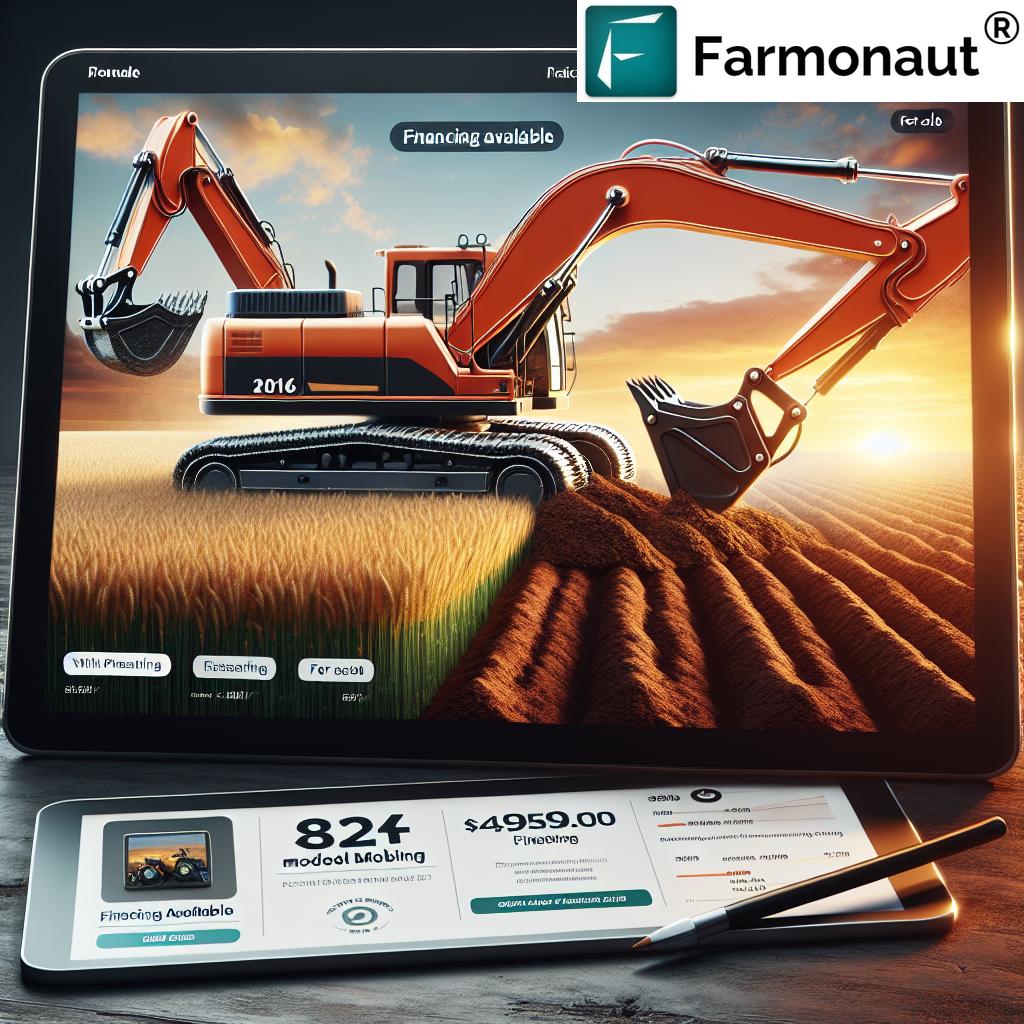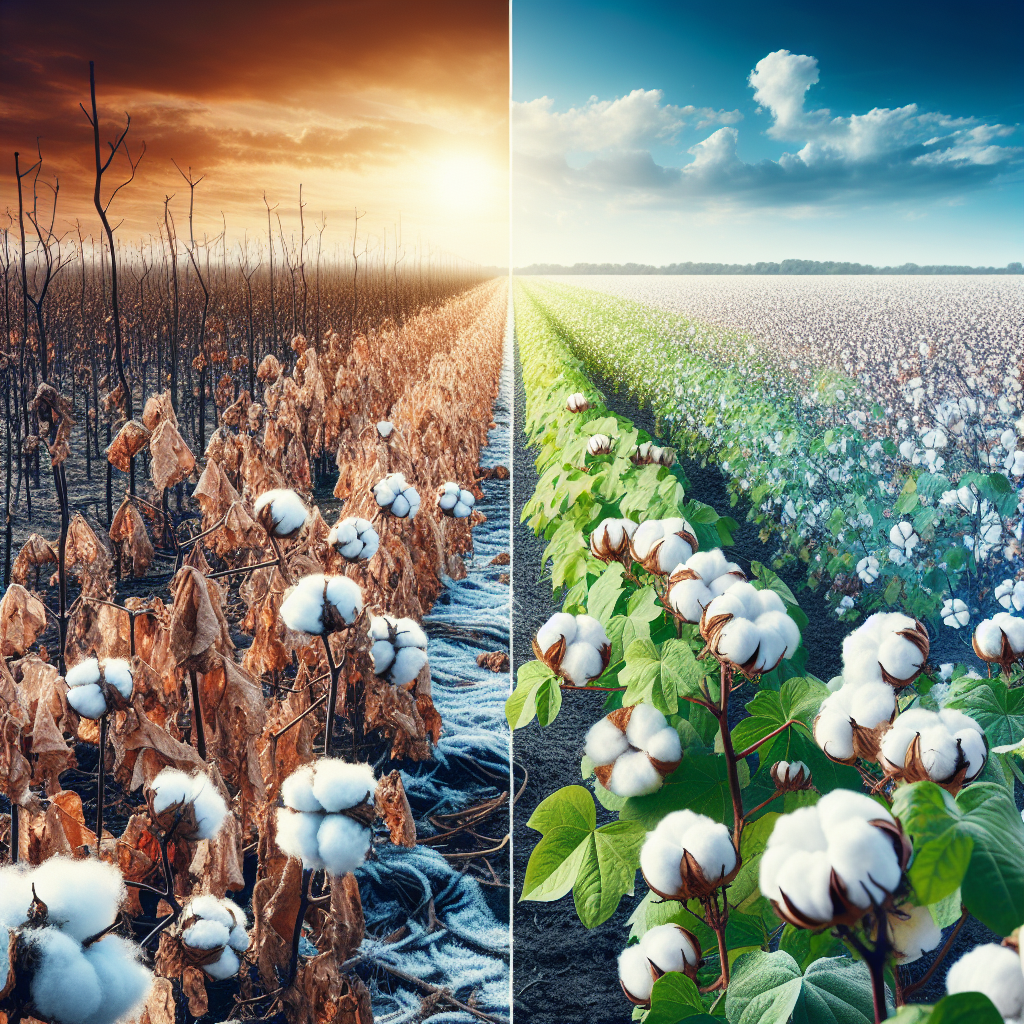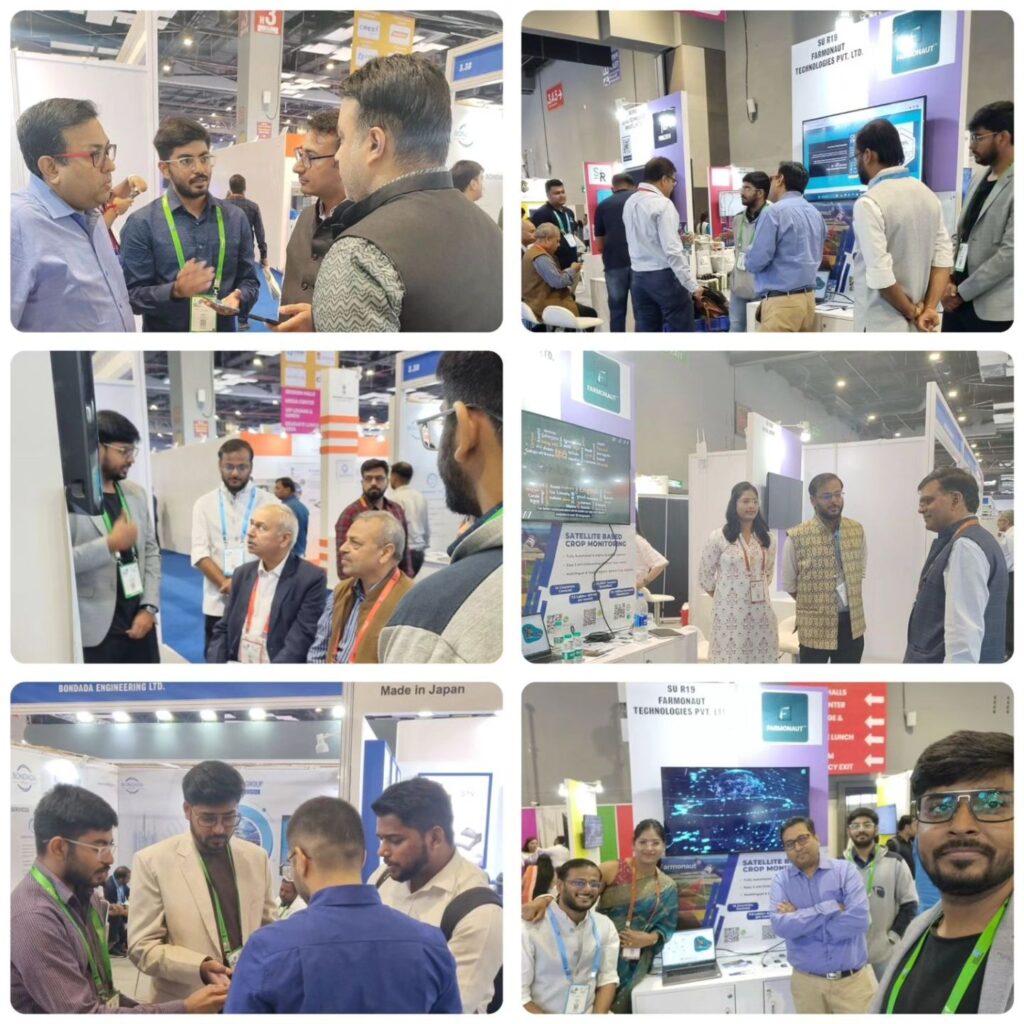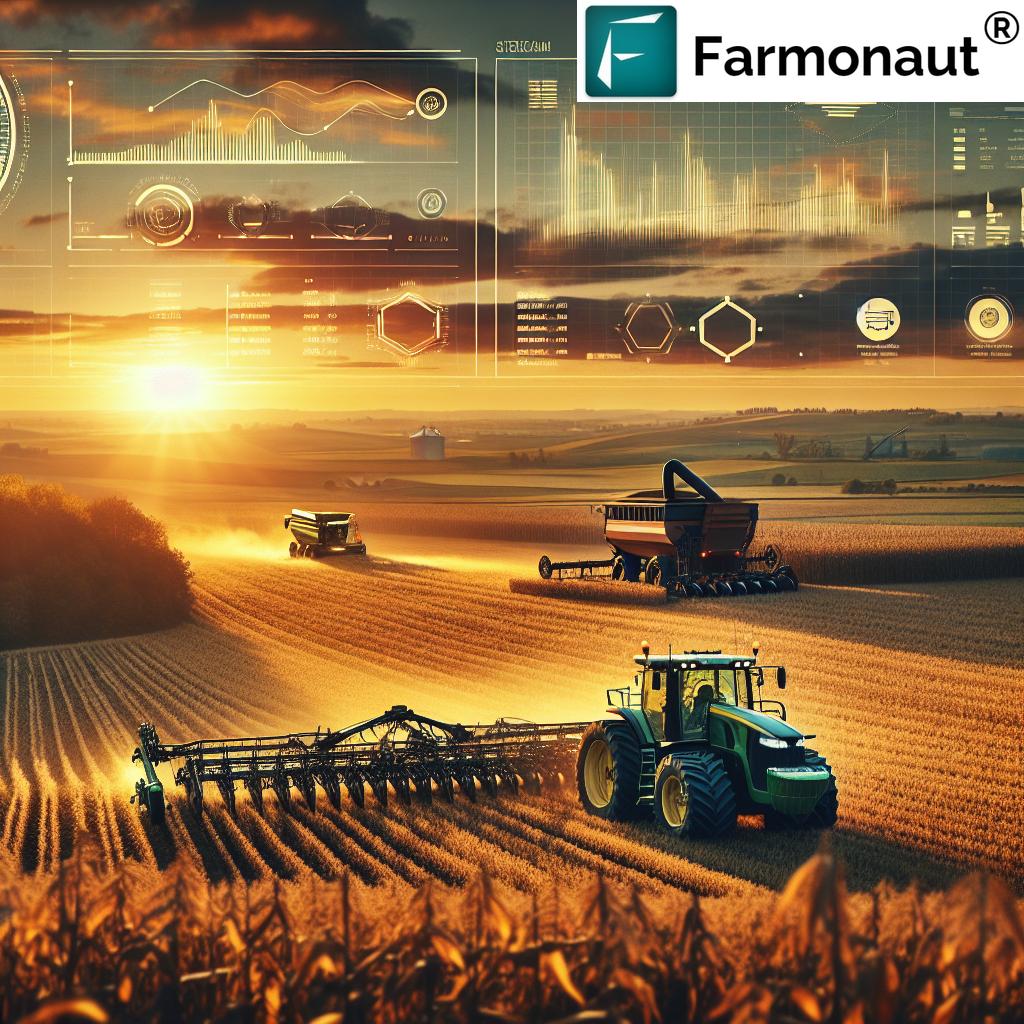Revolutionizing Forage Industry: Latest Innovations in Farm Data Sharing and Agricultural Equipment
“Advanced hay handling technology has increased forage processing efficiency by up to 30% in recent years.”
Welcome to our comprehensive industry update on the latest agricultural innovations and farm data solutions! As we dive into the cutting-edge developments shaping modern farming, we’ll explore how these advancements are transforming the forage industry and agricultural practices as a whole. From advanced hay handling technology to precision agriculture breakthroughs, we’re excited to share insights that will help farmers, producers, and industry professionals stay ahead in the ever-evolving world of agriculture.
Advanced Data Sharing for Farmers: A New Era of Collaboration
In recent years, we’ve witnessed a significant shift in how farmers share and utilize data. The advent of advanced data sharing platforms has revolutionized the way agricultural information is exchanged and analyzed. These platforms allow farmers to collaborate more effectively, sharing insights on crop yields, soil health, and weather patterns.
- Real-time data exchange between farmers and agronomists
- Improved decision-making through collective intelligence
- Enhanced crop management strategies based on shared experiences
One of the key players in this revolution is Farmonaut, a company at the forefront of agricultural technology. Farmonaut’s platform offers satellite-based farm management solutions that enable farmers to access crucial data about their crops and land.
Explore Farmonaut’s innovative solutions:
Agricultural Equipment Innovations: Enhancing Efficiency in the Field
The agricultural equipment sector has seen remarkable advancements, with new machinery designed to improve efficiency and productivity in forage production. These innovations are changing the game for farmers and producers across the industry.
Next-Generation Tractors: Precision and Power Combined
Modern tractors are no longer just powerful workhorses; they’re sophisticated machines equipped with cutting-edge technology. These next-generation tractors offer:
- GPS-guided steering for precise field navigation
- Telematics for real-time performance monitoring
- Integrated software compatibility with farm management systems
“Next-generation tractors equipped with precision agriculture systems can reduce fuel consumption by 15-20% compared to older models.”
Advanced Mowers: Redefining Forage Harvesting
The latest mowers are designed with precision and efficiency in mind, offering features such as:
- Automated blade adjustment for optimal cutting height
- Integrated sensors for real-time crop analysis
- Enhanced durability for extended operational life
These advancements not only improve the quality of harvested forage but also significantly reduce operational costs for farmers.
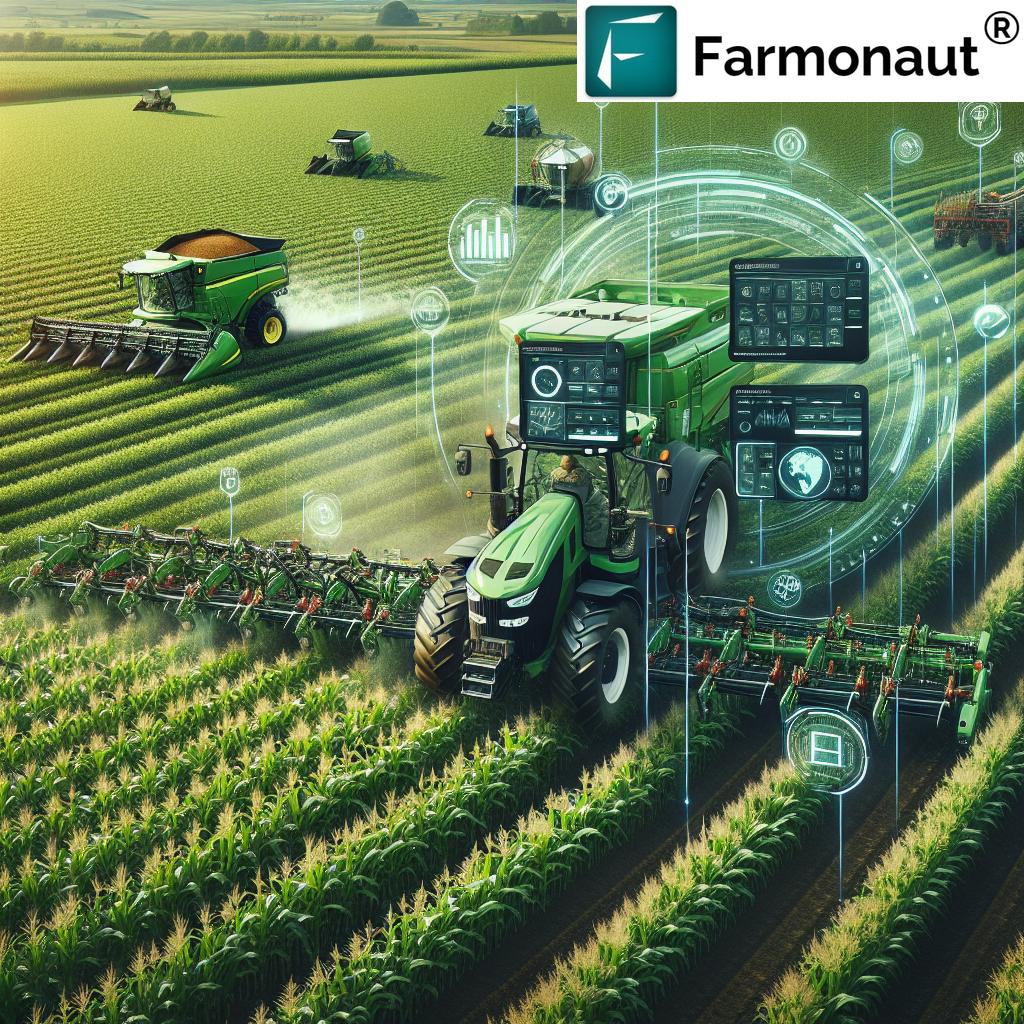
Hay Handling Technology: Streamlining Forage Processing
The hay and forage industry has seen significant improvements in handling technology, leading to more efficient processing and storage solutions. These innovations include:
- Automated bale wrappers for improved silage preservation
- High-capacity balers with integrated moisture sensors
- Advanced stacking systems for optimized storage
By implementing these technologies, farmers can produce higher quality forage while reducing labor costs and minimizing waste.
High-Quality Corn Silage Production: Maximizing Nutritional Value
Corn silage remains a crucial component of livestock feed, and recent innovations have focused on enhancing its nutritional value and production efficiency. Key developments include:
- Precision harvesting equipment for optimal chop length
- Advanced inoculants for improved fermentation
- Real-time analysis tools for assessing silage quality
These advancements enable producers to create high-quality corn silage that meets the nutritional needs of livestock while maximizing yield and storage efficiency.
Forage Industry Updates: Market Trends and Developments
The forage market is experiencing dynamic changes driven by technological advancements and shifting consumer preferences. Some notable trends include:
- Increased demand for organic and non-GMO forage products
- Growing interest in alternative forages for drought resistance
- Expansion of international trade in high-quality hay and forage
These market developments are creating new opportunities for farmers and producers to diversify their operations and tap into emerging markets.
Precision Agriculture Solutions: Data-Driven Farming
Precision agriculture has become a cornerstone of modern farming practices, offering data-driven solutions that optimize resource use and improve crop yields. Key components of precision agriculture in the forage industry include:
- Satellite imagery for crop health monitoring
- Variable rate technology for fertilizer and pesticide application
- Soil mapping for targeted nutrient management
Farmonaut’s satellite-based crop health monitoring system is an excellent example of how precision agriculture is being implemented in the field. By leveraging this technology, farmers can make informed decisions about irrigation, fertilization, and pest management.
Discover Farmonaut’s precision agriculture tools:
Farm Machinery Design Innovations: Ergonomics and Efficiency
The design of farm machinery has evolved significantly, with a focus on improving operator comfort and machine efficiency. Recent innovations include:
- Ergonomic cab designs for reduced operator fatigue
- Intuitive touchscreen interfaces for easy machine control
- Modular components for simplified maintenance and upgrades
These design improvements not only enhance the operator experience but also contribute to increased productivity and reduced downtime.
Integrated Pest Management in Agriculture: Sustainable Crop Protection
Integrated Pest Management (IPM) has gained significant traction as a sustainable approach to crop protection. Modern IPM strategies in the forage industry incorporate:
- Biological control agents for pest suppression
- Precision application of pesticides using drone technology
- Advanced monitoring systems for early pest detection
By adopting these IPM practices, farmers can reduce their reliance on chemical pesticides while maintaining crop health and yield.
Agricultural Software Compatibility: Streamlining Farm Operations
The integration of various agricultural software platforms has become crucial for efficient farm management. Recent developments in software compatibility include:
- Standardized data formats for seamless information exchange
- Cloud-based systems for real-time data access across devices
- API integrations for connecting different farm management tools
Farmonaut’s platform exemplifies this trend, offering API access that allows developers and businesses to integrate satellite and weather data into their own systems.
Explore Farmonaut’s API capabilities:
Farmonaut API
API Developer Docs
Forage Market Developments: Emerging Opportunities
The forage market continues to evolve, presenting new opportunities for farmers and producers. Some key developments include:
- Growing demand for specialized forage blends for high-performance livestock
- Increased interest in forage pellets for easier transport and storage
- Expansion of export markets for premium quality hay
These market trends are encouraging farmers to explore new crop varieties and production methods to meet changing consumer demands.
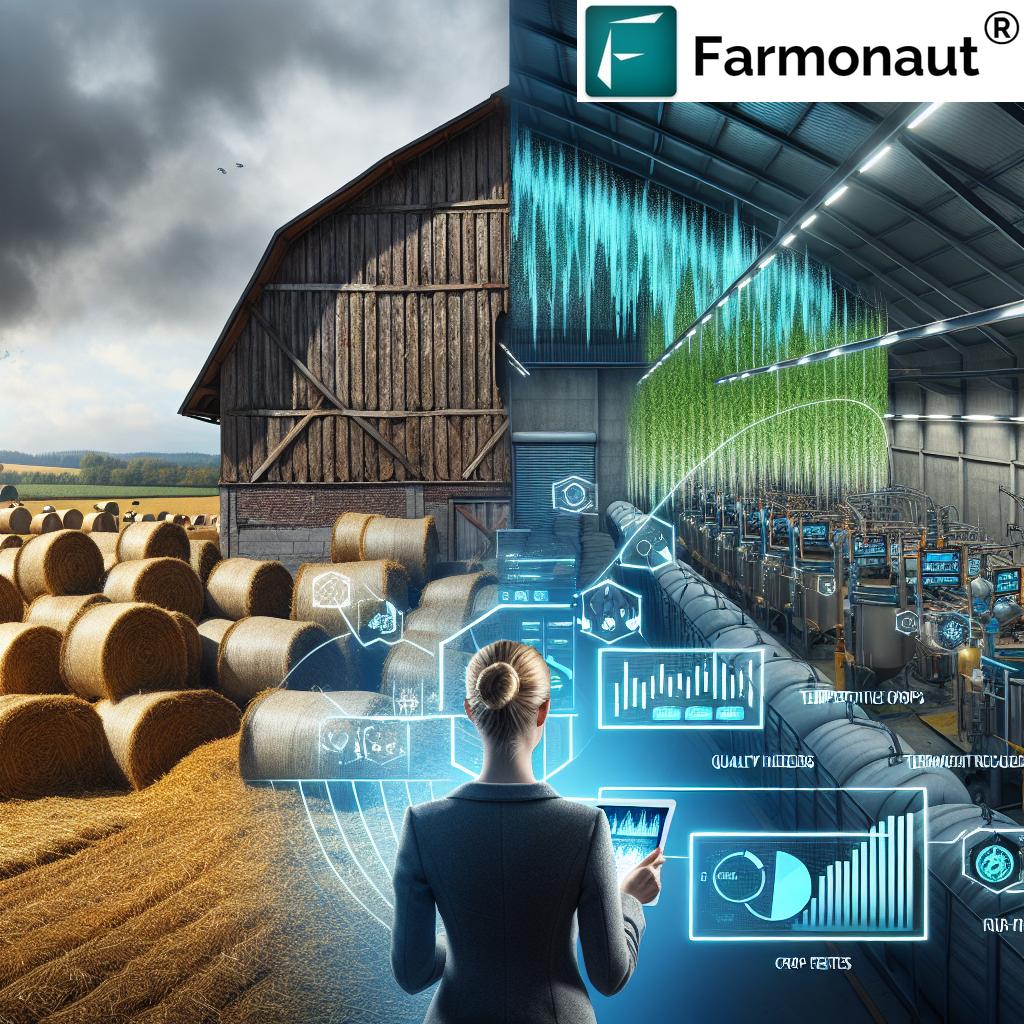
Maximizing Crop Yields: Best Practices and Innovations
Achieving optimal crop yields remains a primary goal for farmers, and new technologies are helping to push the boundaries of what’s possible. Some key strategies for maximizing yields include:
- Precision planting techniques for optimal seed placement
- Advanced irrigation systems with soil moisture sensors
- Crop rotation planning based on data analytics
By combining these practices with the latest agricultural innovations, farmers can significantly boost their productivity and profitability.
The Role of AI and Machine Learning in Agriculture
Artificial Intelligence (AI) and Machine Learning (ML) are revolutionizing the agricultural sector, offering unprecedented insights and automation capabilities. In the forage industry, these technologies are being applied in various ways:
- Predictive analytics for crop yield forecasting
- Automated equipment optimization based on field conditions
- AI-driven pest and disease detection systems
Farmonaut’s Jeevn AI Advisory System is an excellent example of how AI is being leveraged to provide personalized farm management advice, improving productivity and efficiency.
Sustainable Farming Practices in Forage Production
Sustainability has become a key focus in the agricultural sector, with farmers adopting practices that minimize environmental impact while maintaining productivity. In forage production, sustainable practices include:
- Cover cropping to improve soil health and reduce erosion
- Precision fertilizer application to minimize nutrient runoff
- Water conservation techniques such as drip irrigation
These practices not only benefit the environment but also contribute to long-term farm viability and soil health.
The Future of Forage: Emerging Technologies and Trends
As we look to the future of the forage industry, several emerging technologies and trends are poised to shape its evolution:
- Vertical farming for year-round forage production
- Gene editing for improved crop resilience and nutritional value
- Blockchain technology for enhanced traceability in the forage supply chain
These advancements promise to address challenges such as climate change, resource scarcity, and increasing global demand for high-quality forage products.
Agricultural Innovations Comparison
| Innovation Category | Technology/Solution | Key Benefits | Estimated Impact on Efficiency (%) |
|---|---|---|---|
| Farm Data Sharing | Cloud-based collaborative platforms | Improved decision-making, collective intelligence | 20-30% |
| Hay Handling Equipment | Automated bale wrappers and stackers | Faster processing, better preservation | 25-35% |
| Precision Agriculture Tools | Satellite imagery and AI analytics | Optimized resource use, higher yields | 15-25% |
| Next-Generation Tractors | GPS-guided, telematics-enabled machines | Reduced fuel consumption, precise operations | 15-20% |
| Integrated Pest Management Software | AI-driven pest detection and treatment planning | Reduced pesticide use, improved crop health | 30-40% |
Conclusion: Embracing Innovation in the Forage Industry
As we’ve explored throughout this blog post, the forage industry is undergoing a significant transformation driven by technological innovations and changing market dynamics. From advanced data sharing platforms to cutting-edge agricultural equipment, these developments are reshaping how we approach farming and forage production.
By embracing these innovations, farmers and producers can:
- Increase operational efficiency and productivity
- Improve the quality and nutritional value of forage crops
- Reduce environmental impact through sustainable practices
- Adapt to changing market demands and consumer preferences
As we look to the future, it’s clear that staying informed and adopting new technologies will be crucial for success in the evolving agricultural landscape. Companies like Farmonaut are at the forefront of this revolution, providing farmers with the tools and insights they need to thrive in the modern era of agriculture.
We encourage all stakeholders in the forage industry to explore these innovations and consider how they can be implemented to drive growth and sustainability in their operations. The future of farming is here, and it’s more exciting and promising than ever before.
FAQ: Revolutionizing the Forage Industry
Q: What are the main benefits of advanced data sharing for farmers?
A: Advanced data sharing enables real-time collaboration, improved decision-making through collective intelligence, and enhanced crop management strategies based on shared experiences across the farming community.
Q: How are next-generation tractors improving farm efficiency?
A: Next-generation tractors offer GPS-guided steering for precise navigation, telematics for real-time performance monitoring, and integrated software compatibility with farm management systems, leading to reduced fuel consumption and increased operational efficiency.
Q: What role does precision agriculture play in forage production?
A: Precision agriculture in forage production includes satellite imagery for crop health monitoring, variable rate technology for optimized input application, and soil mapping for targeted nutrient management, all contributing to improved yields and resource efficiency.
Q: How is integrated pest management (IPM) evolving in the forage industry?
A: Modern IPM strategies incorporate biological control agents, precision application of pesticides using drone technology, and advanced monitoring systems for early pest detection, reducing reliance on chemical pesticides while maintaining crop health.
Q: What are some emerging trends in the forage market?
A: Emerging trends include growing demand for specialized forage blends for high-performance livestock, increased interest in forage pellets for easier transport and storage, and expansion of export markets for premium quality hay.










